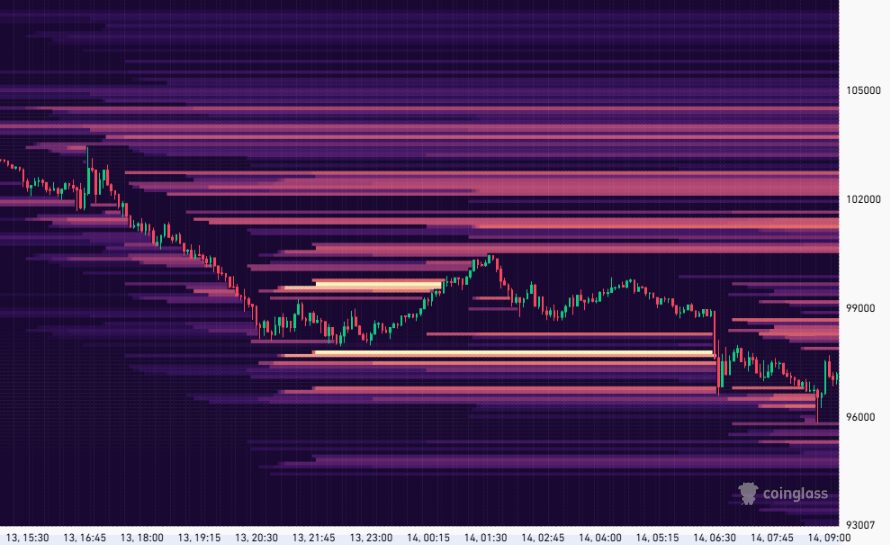Bitcoin News Today: The Major Transition: Bitcoin Mining Companies Evolve into Leading AI Infrastructure Providers
- Bitcoin miners shift to AI infrastructure as margins shrink due to rising energy costs and post-halving challenges, with companies like Core Scientific and Cipher Mining repurposing data centers for AI workloads. - Major contracts, including a $5.5B, 15-year AWS deal and a $9.7B Microsoft agreement, highlight AI’s 25x higher revenue per megawatt compared to Bitcoin mining, driven by stable demand from tech giants. - The pivot reshapes market dynamics, with AI-focused miners outperforming Bitcoin peers as
Industry experts and analysts say that Bitcoin mining companies are rapidly shifting their focus to artificial intelligence infrastructure as profit margins shrink due to rising energy prices and the effects of the latest halving. What was once a specialized approach has now become a widespread industry transformation, with firms such as
This strategic change comes after Bitcoin’s halving in April 2024, which cut block rewards and caused average hash prices—daily earnings per terahash—to fall below $0.05 by mid-2025, representing a 60% decrease from pre-halving figures, as reported by

“Miners have evolved beyond just Bitcoin—they now serve as digital infrastructure providers,” one analyst observed, pointing out that seven of the ten largest miners now earn income from AI or high-performance computing (HPC) ventures, according to
This transformation is altering the competitive landscape. Companies like TeraWulf and Core Scientific are prioritizing AI growth over expanding Bitcoin hashrate, with TeraWulf’s $3.7 billion Fluidstack partnership alone expected to generate $1.85 million per MW each year, according to
This industry pivot is also changing how companies are valued. Investors are now more interested in contracted AI megawatts and revenue per MW than in hash rates, with AI-centric miners like Core Scientific and TeraWulf outperforming those focused solely on Bitcoin, as
Industry watchers suggest that this shift may slow the growth of Bitcoin’s hashrate, as more power is allocated to AI GPU clusters. This development, together with increasing demand from tech giants like Microsoft and Google, has already pushed AI’s energy consumption in the U.S. beyond that of Bitcoin mining, according to
---
Disclaimer: The content of this article solely reflects the author's opinion and does not represent the platform in any capacity. This article is not intended to serve as a reference for making investment decisions.
You may also like
XRP Latest Updates: Launch of XRP ETF Sparks $5 Price Prediction Despite Conflicting Market Indicators
- Binance's influence and Canary Capital's first U.S. XRP ETF drive $5 price forecasts amid rising retail demand and $4.11B open interest. - XRP's unique cross-border payment utility contrasts with subdued institutional demand, despite $138M ETF inflows post-October deleveraging. - SEC's 2023 ruling enabled XRP ETFs, with Canary's product showing $36M debut volume and addressing custody concerns per regulatory guidelines. - Technical indicators show mixed signals: RSI at 48 suggests waning momentum, while

Aave News Today: EU’s Crypto Reform Ignites Discussion: Balancing Innovation and Stability Under Centralized Regulation
- EU's ESMA gains direct regulatory authority over crypto firms under MiCA, aiming to unify fragmented national rules and address cross-border liquidity risks. - MiCA bans EU crypto firms from co-locating order books with non-EU platforms to prevent regulatory arbitrage and ensure fair market conditions. - France, Austria, and Italy push for standardized licensing, while member states resist centralized oversight despite compliance milestones like Aave Labs' MiCA approval. - Centralized supervision faces c

Risks and Potential Rewards in New Cryptocurrency Token Investments: Insights Gained from the KITE Token Rally
- KuCoin’s KITE token launch in November 2025 generated $263M trading volume and $883M FDV, highlighting crypto’s volatility and AI-driven innovation risks. - Retail investors fueled by FOMO and staking incentives drove KITE’s price swings, exposing psychological biases like panic selling and overconfidence. - Technical tools (e.g., Uniswap’s CCA) and diversification strategies aim to mitigate risks, but emotional decision-making remains a critical challenge in speculative markets. - Experts advocate combi

Bitcoin Crashes Below $97K: Retail Out, Smart Money In
